
0
+
Google Reviews

0
+
4.4 (3521 Ratings)
A combination of a Bachelor of Arts (BA) degree and Tableau skills can be a powerful asset in the professional world, particularly in fields related to data analysis, business intelligence, and visual storytelling. In summary, the combination of a Bachelor of Arts degree and Tableau proficiency creates a unique skill set that bridges the gap between data analysis and effective communication.


Curriculum Designed by Experts
Chapter-1 : Introduction
Introduction – Purpose of the BABOK® Guide – What is Business Analysis? – Who is a Business Analyst? – Structure of the BABOK® Guide
The Business Analysis Core Concept Model™ – Key Terms – Requirements Classification Schema – Stakeholders – Requirements and Designs
Plan Business Analysis Approach – Plan Stakeholder Engagement – Plan Business Analysis Governance – Plan Business Analysis Information Management – Identify Business Analysis Performance Improvements
Prepare for Elicitation – Conduct Elicitation – Confirm Elicitation Results – Communicate Business Analysis Information – Manage Stakeholder Collaboration
Trace Requirements – Maintain Requirements – Prioritize Requirements – Assess Requirements Changes – Approve Requirements
Analyze Current State – Define Future State – Assess Risks – Define Change Strategy
Specify and Model Requirements – Verify Requirements – Validate Requirements – Define Requirements Architecture – Define Design Options – Analyze Potential Value and Recommend Solution
Measure Solution Performance – Analyze Performance Measures – Assess Solution Limitations – Assess Enterprise Limitations – Recommend Actions to Increase Solution Value
Analytical Thinking and Problem Solving – Behavioural Characteristics – Business Knowledge – Communication Skills – Interaction Skills – Tools and Technology
Acceptance and Evaluation Criteria – Backlog Management – Balanced Scorecard – Benchmarking and Market Analysis – Brainstorming – Business Capability Analysis – Business Cases – Business Model Canvas – Business Rules Analysis – Collaborative Games – Concept Modelling – Data Dictionary – Data Flow Diagrams – Data Mining – Data Modelling – Decision Analysis – Decision Modelling – Document Analysis – Estimation – Financial Analysis – Focus Groups – Functional Decomposition – Glossary – Interface Analysis – Interviews – Item Tracking – Lessons Learned – Metrics and Key Performance Indicators (KPIs) – Mind Mapping – Non-Functional Requirements Analysis – Observation – Organizational Modelling – Prioritization – Process Analysis – Process Modelling – Prototyping – Reviews – Risk Analysis and Management – Roles and Permissions Matrix – Root Cause Analysis – Scope Modelling – Sequence Diagrams – Stakeholder List, Map, or Personas – State Modelling – Survey or Questionnaire – SWOT Analysis – Use Cases and Scenarios – User Stories – Vendor Assessment – Workshops
The Agile Perspective – The Business Intelligence Perspective – The Information Technology Perspective – The Business Architecture Perspective – The Business Process Management Perspective
1. Introduction and Getting Started
Filtering, Sorting and Grouping are fundamental concepts
when working with and analyzing data. We will briefly review these topics as they apply to Tableau
Working with Data
In the Advanced class, we will understand the difference between joining and blending data, and when we should do each. We will also consider the implications of working with large data sets, and consider options for when and how to work with extracts and the data engine. We will also investigate best practices in “sharing” data sources for Tableau Server users.
In the Fundamentals Class, we were introduced to some basic calculations: basic string and arithmetic calculations and ratios and quick table calculations. In the Advanced class, we will extend those concepts to understand the intricacies of manipulating data within Tableau
A Quick Review of Basic Calculations
Working with Parameters
In the Fundamentals class, we were introduced to parameters – How to create a parameter and use it in a calculation. In the Advanced class, we will go into more details on how we can use parameters to modify our title, create What-If analysis, etc
This topic covers how to create some of the chart types and visualizations that may be less obvious in Tableau. It also covers some of the more common tips & tricks/techniques that we use to assist customers in solving some of their more complex problems.
Best Practices in Formatting and Visualizing
SQL : Data Manipulation (DML Commands)
13. Tableau : Data Handling & Summaries
Tableau : Calculated Fields
Tableau : Parameters
Tableau : Formatting
Boost your career with Cost Management skills through our SAP S/4 HANA FICO Course Training. Learn to streamline financial processes, improve data accuracy, and enhance decision-making. Enroll in SAP S/4 HANA FICO Course Certification today to gain hands-on expertise and advance your career!
Unlock your potential with SAP S/4 HANA FICO Course Training! Gain expertise in finance and controlling, opening doors to roles like SAP FICO Consultant, Financial Analyst, or SAP Project Manager. Enroll for certification today and boost your career with hands-on, industry-relevant training!
Cloud adoption for SAP S/4 HANA FICO course training is crucial as businesses transition to digital landscapes. Mastering SAP S/4 HANA FICO through our expert-led certification course ensures you gain in-demand skills to optimize financial processes in the cloud. Enroll now to future-proof your career!
Scalability and flexibility in SAP S/4 HANA FICO course training empower experts to easily manage the expanding amount of financial data. Our certification course ensures you adapt to evolving business needs. Enroll today and unlock the skills to manage scalable, flexible financial systems efficiently!
Enhance your expertise in Security and Compliance with our comprehensive SAP S/4 HANA FICO Course Training. Learn everything there is to know about risk mitigation, regulatory compliance, and financial data security. Enroll in the SAP S/4 HANA FICO Course Certification to advance your career in secure financial management today!
Mastering SAP S/4 HANA FICO equips you with in-demand skills such as financial accounting, controlling, and real-time data analysis. By enrolling in the SAP S/4 HANA FICO Course Certification with Training, you'll gain the expertise to streamline financial processes, improve decision-making, and enhance your career opportunities in finance and accounting.
Radical Technologies is the leading IT certification institute in Pune, offering a wide range of globally recognized certifications across various domains. With expert trainers and comprehensive course materials, it ensures that students gain in-depth knowledge and hands-on experience to excel in their careers. The institute’s certification programs are tailored to meet industry standards, helping professionals enhance their skillsets and boost their career prospects. From cloud technologies to data science, Radical Technologies covers it all, empowering individuals to stay ahead in the ever-evolving tech landscape. Achieve your professional goals with certifications that matter.
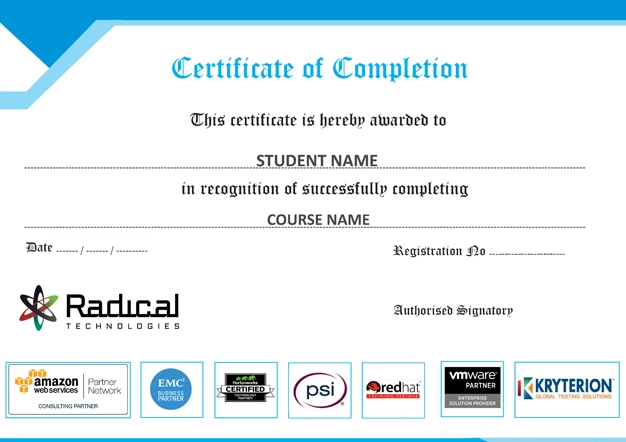


At Radical Technologies, we are committed to your success beyond the classroom. Our 100% Job Assistance program ensures that you are not only equipped with industry-relevant skills but also guided through the job placement process. With personalized resume building, interview preparation, and access to our extensive network of hiring partners, we help you take the next step confidently into your IT career. Join us and let your journey to a successful future begin with the right support.
At Radical Technologies, we ensure you’re ready to shine in any interview. Our comprehensive Interview Preparation program includes mock interviews, expert feedback, and tailored coaching sessions to build your confidence. Learn how to effectively communicate your skills, handle technical questions, and make a lasting impression on potential employers. With our guidance, you’ll walk into your interviews prepared and poised for success.
At Radical Technologies, we believe that a strong professional profile is key to standing out in the competitive IT industry. Our Profile Building services are designed to highlight your unique skills and experiences, crafting a resume and LinkedIn profile that resonate with employers. From tailored advice on showcasing your strengths to tips on optimizing your online presence, we provide the tools you need to make a lasting impression. Let us help you build a profile that opens doors to your dream career.

Infrastructure Provisioning
Implementing automated infrastructure provisioning and configuration management using Ansible. This may include setting up servers, networking devices, and other infrastructure components using playbooks and roles.

Applications Deployment
Automating the deployment and orchestration of applications across development, testing, and production environments. This could involve deploying web servers, databases. middleware, and other application components using Ansible

Continuous Integration
Integrating Ansible into CI/CD pipelines to automate software. build, test, and deployment processes. This may include automating the creation of build artifacts, running tests, and deploying applications to various environments.

I had an excellent learning experience with the S4 HANA Training In Bangalore. The trainers are very passionate about teaching, which made the sessions enjoyable.
The SAP S/4HANA Finance Course at Radical Technologies is highly recommended for anyone looking to boost their career in finance. The skills I acquired are invaluable.
The SAP S4 HANA Course In Bangalore helped me connect with like-minded professionals, expanding my network while enhancing my knowledge.
Participating in the S4 HANA Finance Training opened up new career opportunities for me. The trainers are industry veterans who share valuable real-world experiences.
I was particularly impressed with the SAP S4 HANA FICO Course materials. They are well-organized and provide a clear understanding of each topic.
The SAP S4 HANA FICO Training is worth every penny. I gained valuable insights and practical knowledge that I could immediately apply in my job.
Radical Technologies offers one of the best S4 HANA Training programs. The support provided throughout the course was exceptional.
I loved the flexibility of the SAP S4 HANA Training Online. It allowed me to learn at my own pace while still receiving excellent guidance from the instructors.
The hands-on approach of the SAP S/4HANA Finance Training made it easier for me to grasp practical applications of the concepts learned.
The SAP S4 HANA Finance Course was instrumental in my career advancement. I landed a better job shortly after completing my training at Radical Technologies.
I chose the SAP FICO S4 HANA Course because of the positive reviews, and it did not disappoint. The trainers are experts in their field and very approachable.
The SAP S/4 HANA Training In Bangalore helped me gain a strong foundation in finance management. The course structure is ideal for both beginners and experienced professionals.
Radical Technologies offers excellent SAP S4 HANA FICO Online Training. The interactive sessions kept me engaged, and I learned a lot from my peers.
The SAP S4 HANA Finance Online Training was well-organized, and I appreciated the availability of recorded sessions for revision. It was a fantastic learning experience!
I highly recommend the SAP S4 HANA Training In Bangalore for anyone serious about a career in finance. The training has equipped me with essential skills for the job market.
The SAP S4 HANA FICO Course at Radical Technologies is perfect for beginners. The instructors explain everything clearly, making complex topics easy to understand.
After completing the SAP S4 HANA Finance Training, I feel confident in my abilities to handle financial tasks efficiently in an SAP environment.
The SAP S4 HANA FICO Training provided me with the skills needed to excel in the finance domain. The hands-on projects were particularly beneficial.
I was searching for SAP S4 HANA Training Near Me, and I found Radical Technologies in Bangalore. Their training quality is unmatched, and I highly recommend them.
Radical Technologies is the go-to place for SAP S4 HANA FICO Online Training. The trainers are supportive and always ready to clarify doubts, ensuring a great learning experience.
Taking the SAP S4 HANA Finance Online Training was a game-changer for me. The flexibility of online sessions allowed me to balance my work and studies effectively.
The S4 HANA FICO Training program is comprehensive and well-structured. I appreciated the real-world examples shared by the trainers, which made the learning process enjoyable.
The SAP S4 HANA FICO Course offered at Radical Technologies in Bangalore provides a perfect blend of theory and hands-on experience, making it the best choice for anyone looking to advance their career.
I enrolled in the SAP S4 HANA Finance Course and was impressed by the depth of the material. The practical sessions really helped me grasp complex concepts easily.
The SAP S/4 HANA FICO Training at Radical Technologies in Bangalore exceeded my expectations. The instructors are knowledgeable, and the course content is very relevant to current industry standards.









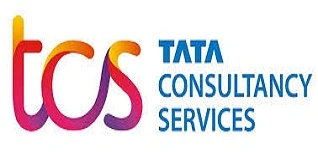







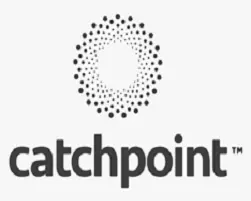



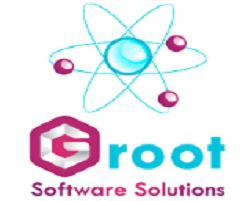







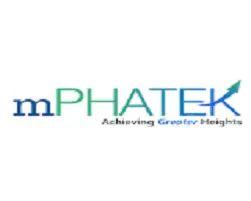






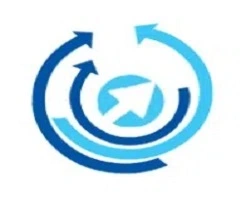






SAP S/4 HANA FICO is a module within SAP’s S/4 HANA suite that combines Financial Accounting (FI) and Controlling (CO) functionalities. It enables organizations to manage their financial processes in real-time, enhancing reporting, compliance, and decision-making capabilities.
Unlike SAP ECC, which is built on a traditional database, SAP S/4 HANA FICO leverages in-memory computing for faster data processing and analytics. It also introduces the Universal Journal, which integrates financial and controlling data into a single line item, simplifying reporting.
Key benefits include real-time financial reporting, streamlined financial processes, improved compliance, better data analytics, and enhanced integration with other SAP modules. These features help organizations make informed decisions more quickly and efficiently.
SAP S/4 HANA FICO integrates seamlessly with other modules such as Sales and Distribution (SD), Material Management (MM), Human Capital Management (HCM), and Supply Chain Management (SCM), enabling a holistic view of business operations.
The Universal Journal consolidates financial and controlling data into a single database table. This eliminates data redundancy and allows for real-time reporting across various dimensions, enabling users to access comprehensive financial insights easily.
Real-time analytics in SAP S/4 HANA FICO allows organizations to analyze financial data as it is generated. This capability supports immediate decision-making, enhances forecasting accuracy, and enables timely responses to changing business conditions.
SAP S/4 HANA FICO provides built-in compliance tools, such as audit trails and automated checks against regulatory standards. Organizations can customize these features to meet local and international compliance requirements, ensuring accurate financial reporting.
SAP S/4 HANA FICO allows for the generation of various financial reports, including balance sheets, profit and loss statements, cash flow statements, and customizable management reports. Users can create these reports in real-time based on current data.
Asset accounting in SAP S/4 HANA FICO enables organizations to track and manage fixed assets efficiently. This includes monitoring acquisition, depreciation, and disposal processes, which helps maximize asset utilization and ensure accurate financial reporting.
Yes, SAP S/4 HANA FICO supports multi-currency transactions, allowing organizations to conduct business across different countries while managing various currencies. The system provides tools for currency conversion, exchange rate management, and reporting.
Key components of the CO module include Cost Center Accounting, Profitability Analysis (CO-PA), Internal Orders, Activity-Based Costing, and Product Costing. These components help organizations monitor costs and improve financial planning and control.
SAP S/4 HANA FICO enhances cash flow management by providing real-time visibility into accounts receivable and payable, enabling organizations to optimize payment cycles and forecast cash requirements accurately, thus ensuring liquidity.
Implementing SAP S/4 HANA FICO involves several steps, including project planning, system configuration, data migration, user training, and ongoing support. Organizations should adopt a structured approach and involve stakeholders throughout the implementation process.
Yes, SAP S/4 HANA FICO is suitable for SMEs, as it provides scalable solutions that can grow with the business. Its user-friendly interface and real-time capabilities enable SMEs to enhance their financial management without the complexities of larger systems.
SAP S/4 HANA FICO users have access to a wealth of resources, including official SAP documentation, community forums, training courses, and certification programs. Additionally, SAP offers support services for troubleshooting and optimizing system performance.
Ambegaon Budruk | Aundh | Baner | Bavdhan Khurd | Bavdhan Budruk | Balewadi | Shivajinagar | Bibvewadi | Bhugaon | Bhukum | Dhankawadi | Dhanori | Dhayari | Erandwane | Fursungi | Ghorpadi | Hadapsar | Hingne Khurd | Karve Nagar | Kalas | Katraj | Khadki | Kharadi | Kondhwa | Koregaon Park | Kothrud | Lohagaon | Manjri | Markal | Mohammed Wadi | Mundhwa | Nanded | Parvati (Parvati Hill) | Panmala | Pashan | Pirangut | Shivane | Sus | Undri | Vishrantwadi | Vitthalwadi | Vadgaon Khurd | Vadgaon Budruk | Vadgaon Sheri | Wagholi | Wanwadi | Warje | Yerwada | Akurdi | Bhosari | Chakan | Charholi Budruk | Chikhli | Chimbali | Chinchwad | Dapodi | Dehu Road | Dighi | Dudulgaon | Hinjawadi | Kalewadi | Kasarwadi | Maan | Moshi | Phugewadi | Pimple Gurav | Pimple Nilakh | Pimple Saudagar | Pimpri | Ravet | Rahatani | Sangvi | Talawade | Tathawade | Thergaon | Wakad
I had an amazing experience with this service. The team was incredibly supportive and attentive to my needs. The quality of the work exceeded my expectations. I would highly recommend this to anyone looking for reliable and professional service."
I had an amazing experience with this service. The team was incredibly supportive and attentive to my needs. The quality of the work exceeded my expectations. I would highly recommend this to anyone looking for reliable and professional service."
I had an amazing experience with this service. The team was incredibly supportive and attentive to my needs. The quality of the work exceeded my expectations. I would highly recommend this to anyone looking for reliable and professional service."
I had an amazing experience with this service. The team was incredibly supportive and attentive to my needs. The quality of the work exceeded my expectations. I would highly recommend this to anyone looking for reliable and professional service."
I had an amazing experience with this service. The team was incredibly supportive and attentive to my needs. The quality of the work exceeded my expectations. I would highly recommend this to anyone looking for reliable and professional service."
Looking to boost your career in financial accounting and controlling? Enroll in our SAP S/4 HANA FICO Training, a comprehensive course designed to equip you with the skills needed to master SAP’s Financial Accounting (FI) and Controlling (CO) modules within the latest S/4 HANA environment. This certification course is curated for professionals aiming to advance their expertise in finance, controlling, and analytics using SAP’s powerful enterprise resource planning (ERP) system.
In today’s fast-evolving business landscape, companies are looking for professionals proficient in advanced financial management tools to optimize their processes. SAP S/4 HANA, with its in-memory computing and real-time processing, offers a cutting-edge solution. Mastering the FICO module within this system allows professionals to streamline financial operations, analyze data more efficiently, and deliver greater business value. This makes SAP S/4 HANA FICO one of the most sought-after skills in the global job market.
1. Financial Accounting (FI) Module:
General Ledger (GL): Understanding the core functionalities of GL accounting, including real-time integration with other modules.
Accounts Payable/Receivable: Managing customer/vendor invoices and transactions.
Asset Accounting (AA): Learn how to manage and maintain fixed assets for organizations.
Financial Statements: Generation of balance sheets, profit and loss statements, and tax reporting.
Bank Accounting: Management of banking transactions within the organization.
2. Controlling (CO) Module:
Cost Center Accounting (CCA): Monitoring and controlling costs within different departments.
Internal Orders: Tracking costs for specific tasks and projects.
Profitability Analysis (PA): Detailed analysis of profitability across different market segments.
Cost Element Accounting: Understand direct and indirect cost flows for more efficient financial planning.
Product Costing: Detailed configuration of product costing for businesses engaged in production.
Upon successful completion of the SAP S/4 HANA FICO Training, you will be ready to pursue roles such as:
Many of our graduates have secured lucrative roles in global companies due to their mastery of SAP S/4 HANA.
SAP S/4 HANA FICO (Financial Accounting and Controlling) is a powerful ERP solution that integrates core financial processes with real-time data analytics. Organizations across various sectors leverage SAP S/4 HANA FICO to streamline their financial operations, enhance decision-making, and improve compliance. Below, we delve into the key applications of SAP S/4 HANA FICO, showcasing its versatility and significance in modern business environments.
1. Real-Time Financial Reporting
One of the standout features of SAP S/4 HANA FICO is its ability to provide real-time financial reporting. This application enables organizations to:
Generate instantaneous financial statements, including balance sheets and profit and loss accounts.
Utilize real-time data analytics for insightful decision-making.
Access customizable dashboards that visualize key financial metrics, facilitating better business performance assessments.
2. Streamlined Accounts Payable and Receivable
SAP S/4 HANA FICO enhances the efficiency of accounts payable (AP) and accounts receivable (AR) processes, leading to improved cash flow management. Key applications include:
Automated invoice processing and payment workflows, reducing manual errors and processing times.
Comprehensive tracking of customer payments and outstanding invoices, ensuring timely collections.
Integration with payment gateways to facilitate seamless transactions and enhance vendor relationships.
3. Advanced Cost Management
The controlling (CO) module within SAP S/4 HANA FICO provides robust cost management tools that help organizations monitor and control expenses effectively. Key applications consist of:
Cost center accounting for tracking operational costs by department or project, promoting accountability.
Profitability analysis to assess the profitability of products, services, or customer segments, guiding strategic decisions.
Internal order management for monitoring costs associated with specific tasks or projects, enabling better budgeting and resource allocation.
4. Enhanced Asset Management
Managing fixed assets efficiently is critical for maximizing investment returns. SAP S/4 HANA FICO simplifies asset management through:
Asset accounting capabilities that automate the tracking, valuation, and depreciation of fixed assets.
Real-time insights into asset performance, helping organizations make informed investment decisions.
Streamlined processes for asset acquisition, disposal, and revaluation, reducing administrative overhead.
5. Regulatory Compliance and Risk Management
Organizations face increasing scrutiny from regulatory bodies. SAP S/4 HANA FICO aids in maintaining compliance and managing risks by:
Implementing built-in compliance checks that align financial processes with regulatory standards, reducing the risk of penalties.
Providing audit trails and detailed transaction histories for transparency and accountability.
Facilitating robust risk management frameworks that help identify, assess, and mitigate financial risks effectively.
6. Integration with Other Business Functions
The strength of SAP S/4 HANA FICO lies in its seamless integration with other SAP modules and business functions, such as:
Sales and Distribution (SD): Real-time integration with sales processes allows for accurate revenue recognition and customer account management.
Material Management (MM): Synchronization with procurement processes enables effective inventory management and reduces costs.
Human Capital Management (HCM): Integration with HR processes supports payroll management and employee-related financial reporting.
7. Predictive Analytics and Planning
Leveraging advanced analytics and machine learning capabilities, SAP S/4 HANA FICO offers predictive insights that empower organizations to:
Anticipate financial trends and forecast future performance based on historical data.
Conduct scenario planning and budgeting, enabling proactive financial management.
Optimize cash flow management by predicting cash requirements and ensuring liquidity.
8. Support for Global Operations
For organizations operating in multiple countries, SAP S/4 HANA FICO provides functionalities that support international financial management, including:
Multi-currency and multi-language capabilities for effective global financial reporting and analysis.
Compliance with local taxation and regulatory requirements, ensuring accurate financial operations across regions.
Centralized financial management, enabling companies to monitor and control finances across various subsidiaries and locations.
Welcome to Radical Technologies, the leading institute for SAP S/4 HANA FICO Training in Bangalore. Our mission is to equip professionals with the skills and knowledge they need to excel in the ever-evolving world of finance and technology. With a strong focus on practical training, we provide a comprehensive curriculum designed to meet the demands of the industry.
At Radical Technologies, we offer a variety of training options, including S4 HANA FICO Training, SAP S4 HANA Finance Training, and SAP S4 HANA FICO Online Training. Our courses are tailored to suit the diverse needs of learners, from beginners to seasoned professionals. Whether you prefer in-person instruction or the flexibility of SAP S4 HANA Finance Online Training, our expert trainers are here to guide you every step of the way.
Our SAP S4 HANA FICO Course covers essential topics such as financial accounting, controlling, and reporting, ensuring that you gain a solid understanding of SAP’s powerful functionalities. With our SAP FICO S/4 HANA Course, you will not only learn theoretical concepts but also engage in hands-on projects that simulate real-world scenarios.
We are proud to offer SAP S/4 HANA Training In Bangalore, providing a conducive learning environment in a city known for its vibrant tech ecosystem. Our training center is equipped with the latest technology and resources, ensuring that our students receive the best education possible.
For those looking for flexibility, our SAP S4 HANA Training Online and S4HANA Training Online options allow you to learn from anywhere at your convenience. Our SAP S4 HANA Finance Course is designed to fit around your schedule, making it easy to balance work and study.
With an emphasis on real-time applications and compliance, our SAP S/4HANA Finance Training prepares you for immediate deployment in the workplace. We also provide ongoing support and resources to help you succeed in your career after completing the training.
If you’re searching for SAP S4 HANA Training Near Me, look no further than Radical Technologies. Join our community of successful graduates who have advanced their careers through our top-tier training programs. Contact us today to learn more about our SAP S/4 HANA FICO Training offerings and start your journey towards becoming an SAP professional in Bangalore!

(Our Team will call you to discuss the Fees)
